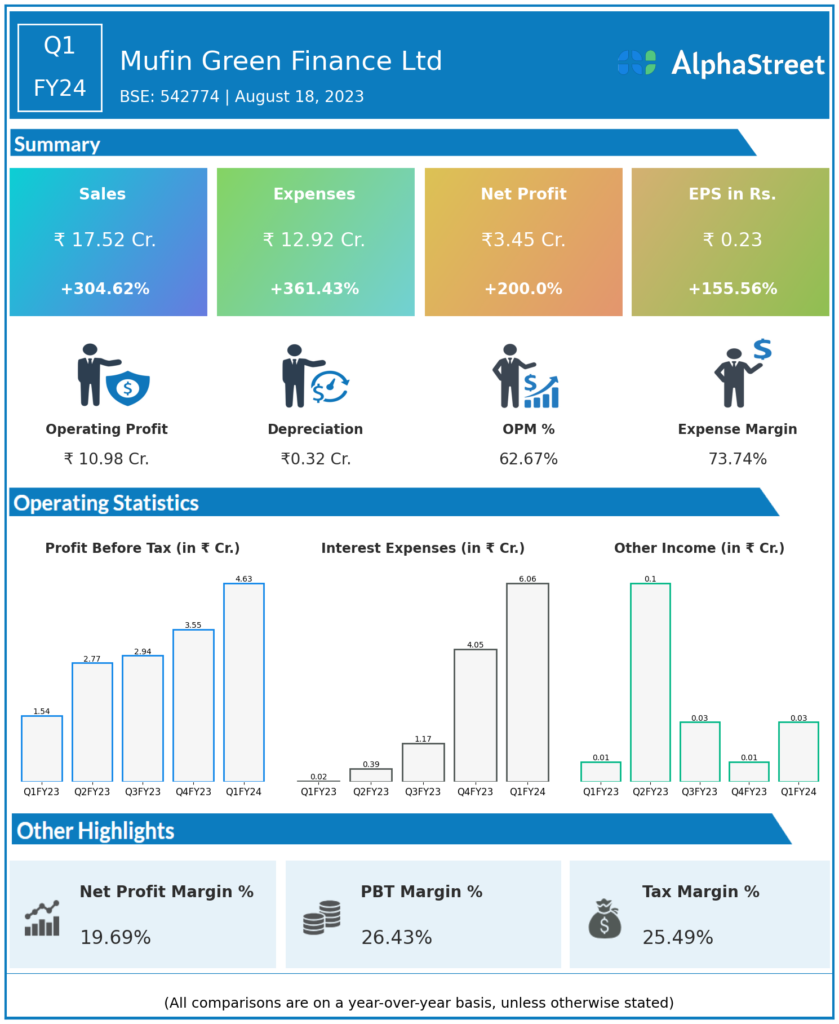APM Finvest Limited was incorporated in May 2016, a Non-Banking Financial Company Non-Deposit Taking (NBFC-ND) registered with Reserve Bank of India and is carrying on the business of Investment into shares, stocks, securities, and providing loans of all kinds.
Financial Results:
Mufin Green Finance Ltd reported Revenues for Q1FY24 of ₹17.52 Crores up from ₹4.33 Crore year on year, a rise of 304.62%.
Total Expenses for Q1FY24 of ₹12.92 Crores up from ₹2.80 Crores year on year, a rise of 361.43%.
Consolidated Net Profit of ₹3.45 Crores up 200.0% from ₹1.15 Crores in the same quarter of the previous year.
The Earnings per Share is ₹0.23, up 155.56% from ₹0.09 in the same quarter of the previous year.

*It is important to note that the way the results have been accounted for are slightly different than the ones the companies may choose to publish.
*The presented data is automatically generated. It may occasionally generate incorrect information.
